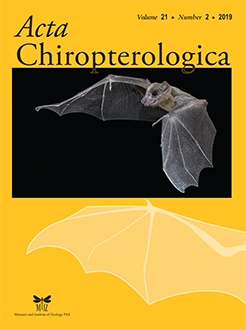Phyllostomid bats display a variety of social structures and mating systems; the influence of these features on the distribution of genetic diversity within and between bat populations is currently unknown. Based on the mitochondrial DNA D-loop region, we investigated the relationship between genetic structure and social characteristics in four species of phyllostomid bats (Sturnira hondurensis, Artibeus jamaicensis, Carollia sowelli, and Dermanura tolteca) inhabiting Selva El Ocote Biosphere Reserve (REBISO). According to their ecological characteristics, we expected a relatively high genetic diversity and stable populations, as well as a weak genetic structure in S. hondurensis and C. sowelli, and a moderate one in A. jamaicensis and D. tolteca. The demographic history and mismatch distribution were inferred. Besides, we estimated the time elapsed from demographic change (in number of generations). Finally, we calculated standard genetic diversity indicators and determined the genetic structure, haplotype networks, and conducted spatial autocorrelation analyses. Genetic diversity was higher in S. hondurensis, intermediate in C. sowelli, and low in A. jamaicensis and D. tolteca. The neutrality tests indicated population expansion in A. jamaicensis, C. sowelli, and D. tolteca; S. hondurensis showed differentiation between populations with no apparent demographic changes. The extent of genetic differentiation was high in S. hondurensis, intermediate in C. sowelli, weak in A. jamaicensis, and nil in D. tolteca. The spatial autocorrelation revealed genetic structure at certain geographic distances in A. jamaicensis, C. sowelli, and S. hondurensis, while D. tolteca displayed a low structure at the greatest geographic distances. No clear relationship was evident between ecological attributes and genetic structure in the bat species studied, probably due to the slight differences in the ecological characteristics of these species. Further studies should include ecological factors such as resource availability and habitat selection, as well as nuclear markers, to obtain a biparental genetic estimation. This study highlights the need of conduct further research about the relationship of ecological and genetic traits of tropical bats in high-biodiversity reserves.
How to translate text using browser tools
2 March 2020
Genetic Structure Associated with the Ecological Traits of Four Species of Phyllostomid Bats Inhabiting Selva El Ocote Biosphere Reserve, Chiapas, México
Bárbara Cruz-Salazar,
Maricela García-Bautista,
Lorena Ruiz-Montoya
ACCESS THE FULL ARTICLE

Acta Chiropterologica
Vol. 21 • No. 2
December 2019
Vol. 21 • No. 2
December 2019
conservation
D-loop
population genetic structure
REBISO
social structure
tropical bats




